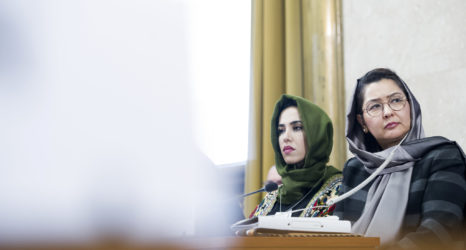
Throughout history, Arab women have suffered greatly under foreign occupation, believing that one day their countries would be free and Women would have political freedom. However, their hopes were quickly dashed as they were forced to live under patriarchal oppression. Even when the Arab States began to attain their independence in 1918, starting from Yemen and ending with the United Arab Emirates, the silence remained.
After independence, some Arab states granted women the right to vote and run for office. In other Arab states, women had to fight harder and longer to receive the most fundamental political right: speech. In the not-so-distant past, women gained their hard-won suffrage in some Arab states, such as the United Arab Emirates in 2006 and Saudi Arabia in 2011.
When the Arab Spring revolutions encouraged many countries to seek political reform at large, with some succeeding in changing political norms and removing their authoritarian rulers, women were most affected by these political changes.
There has been a long history of silencing Arab women‘s political speech, but today this changes.
Today, Arab countries that succeeded in reforming their systems are more focused on growing women’s rights and establishing gender parity in their politics. To ensure that women’s rights are respected, more than half of the Arab states have implemented reserved seats as a gender quota to increase the number of women in political posts, particularly in parliament.
For the first time, Egypt has enhanced women’s representation to 27.7 percent in the lower House, 13.3 percent in the Parliament’s upper house, and 24.2 percent in the council of ministers. According to the interparliamentary union’s January update, Egypt, the Philippines and the United States are in a three-way tie at 72nd in the world for women’s representation. While Egypt has leaped the rankings, the United States has fallen.
In the political environments of this fragmented, turbulent and traditionally conservative region, women in countries that continue to suffer ongoing conflicts and civil wars tend to be less represented in national parliaments. In these situations, women’s place in government tends to be dismissed in order to deal with the “more important” issues of ending the violence. For instance, Yemen has zero women in their national parliament, while Syria has only 11.2 percent for women’s representation.
Egypt, the Philippines and the United States are in a three-way tie at 72nd in the world for women’s representation. While Egypt has leaped the rankings, the United States has fallen.
However, to add to the complex range of success levels here, the United Arab Emirates is the only Arab state to achieve gender parity in any legislative chamber. It is one of just five countries in the world to reach that success benchmark for equal representation, with women making up a total of 50 percent of its lower House.
Research into the region indicates that women in the Arab States with implemented gender quotas have higher representation than women in countries without such regulations, such as Kuwait and Oman, where women compose only 1.6 percent and 2.3 percent of the parliaments, respectively.
Still, most Arab countries continue to discriminate against women through their personal status laws and social and cultural aspects. But with the increasing rates of women in political power, these issues have been discussed heavily, and one can feel change on the horizon.
Up next:





